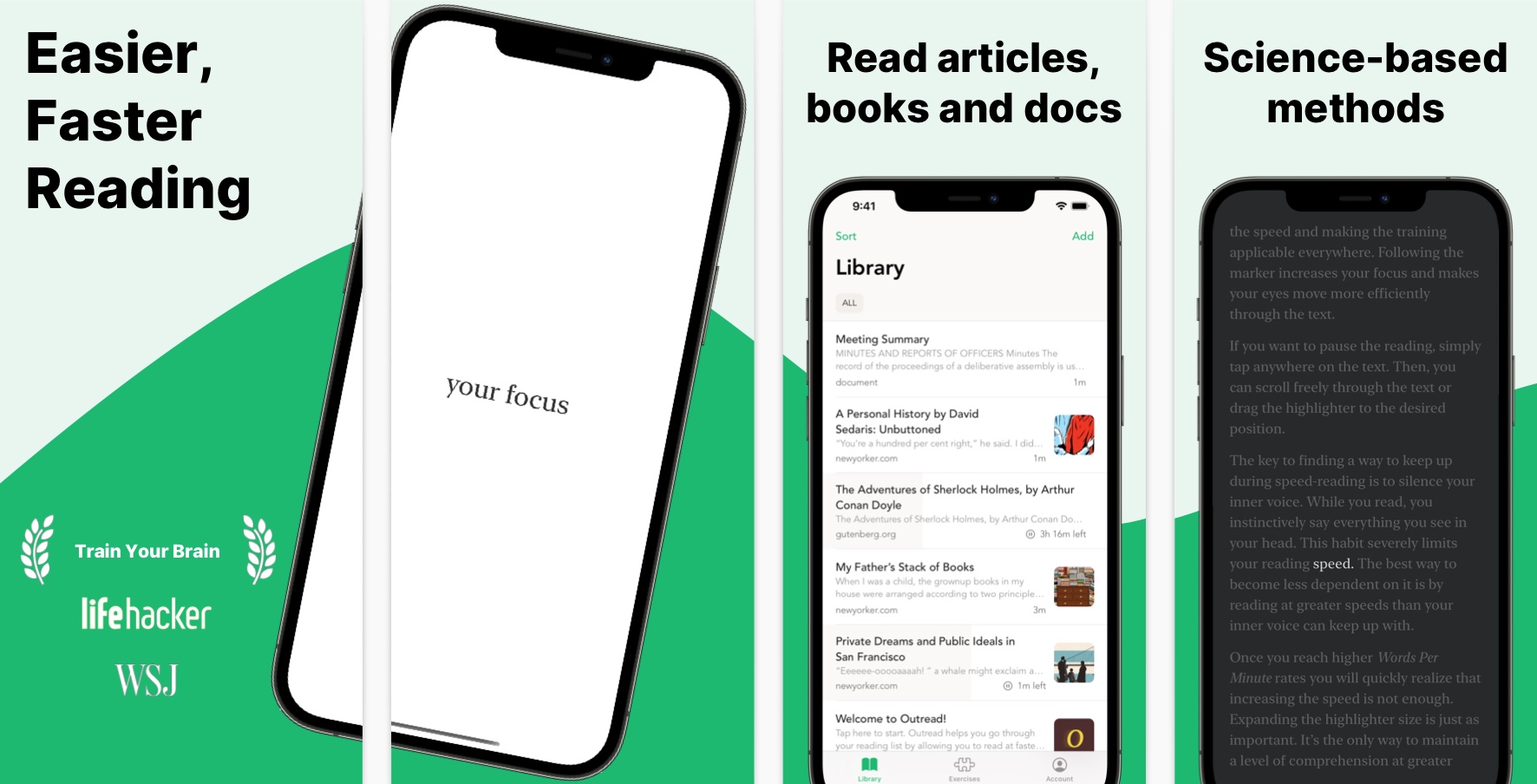Speed Reading Guide
Jul 21, 2022
Are you a slow reader? Do you wish you could read faster, but never knew where to start? It’s not easy to learn how to speed read, but it’s definitely worth the effort. Once you get into the habit of reading at a faster pace, it can really change your life—and help take your career to the next level. In this guide, I’ll share some tips and tricks for getting started on improving your reading speed as well as provide some resources that can help along the way.
Why Do You Want to Read Faster?
You may want to read faster for many reasons. There are some obvious ones:
- You’ll be able to get more done in less time, which means you’ll be able to do more of the things you love (like reading!).
- If you’re a student, this will help you understand material better and get better grades.
- If you need to read for work (e.g. you’re a lawyer or a doctor) you’ll be able to finish your work quicker.
But there’s also another reason: because reading at a faster pace opens up whole new worlds of fun and entertainment. It’s like watching an action film in slow motion—the experience is just as satisfying but so much more captivating! One of the best things about speed reading is that it can also improve your reading comprehension and retention.
Speed Reading Techniques
- Do not reread. In order to read faster, do not go back and reread. Instead, try to focus on what you are currently reading. If a word or phrase does not make sense in the context of the sentence, then ask yourself what it could possibly mean and use this information to determine how the rest of the sentence should be interpreted.
- Stop your inner monologue. The inner voice is simply what goes through your head when you are reading something: for example, “I know this already” or “This makes sense”. In order to speed up your reading, it’s important that you don’t let yourself get distracted by these thoughts. Instead, try to focus on what the words mean and how they fit together in order to understand the larger context of what you are reading.
- Employ Word-chunking. When we read, our eyes naturally jump from one word to the next. In order to read faster, try chunking together words that have similar meanings or sounds. For example, if you are reading a sentence about a person who goes on vacation and does not return for several days, then you could chunk together “vacation” and “return” into one word: vacationreturn.
- Use peripheral vision to scan the page, using your peripheral vision to see where each new sentence begins. This will help you to avoid getting lost when reading a long passage of text, because you will be able to quickly find out where you are in the text without having to go back and reread.
- Use a pointer. If you’re not using this method already, holding your finger on the text will help you keep your place while reading faster. This is especially helpful during the first few seconds of reading each line so that you don’t lose track of where to go next.
- Read for the big picture. You can’t read every word, or even every sentence or paragraph. It’s tempting to get caught up in small details, but don’t do it! Focus on what you need to know and let the rest go by. Read only what’s relevant to your interests, and skip everything else.
- Improve your vocabulary. The more words you know and can quickly recognize, the less time your eyes will spend on trying to parse the text they see. This is a good way to improve your reading comprehension, as well. If you are able to quickly recognize words and their meanings, then your brain will be able to focus on what the author is trying to say instead of trying to figure out what the writer meant by each individual word.
Skimming Is an Option
Skimming is a useful technique for getting the gist of a text. It can also be used if you have time constraints and need to quickly get an understanding of the information in front of you. Here’s how it works:
- Scan the title, subtitle, first paragraph and any headings or subheadings. Know what the text is about.
- Skim the first sentence of each paragraph.
- Look for punctuation marks that indicate something important.
- If you encounter an unfamiliar name, see if it’s defined in a nearby sentence or in the glossary or index.
- As you get to know how to skim effectively, you will be able to go back and read more thoroughly if necessary.
Speed Reading Apps
Speed reading apps are a great way to get started, and they can also be used to learn new techniques. These apps will help you practice and develop your ability to read faster. If you’re trying to read more books, speed reading apps can help you do that too. If you want to be able to finish your work faster, there’s no better way than with an app and the app we recommend is our flagship product: Outread.
Conclusion
The first thing to remember is that reading speed is a skill, and like any other skill, it takes practice. You can’t just watch a BuzzFeed video on speed reading and expect your brain to magically transform into an efficient information-processing machine. This means you may get frustrated at first, especially if you’re used to reading at a slower pace. That’s okay! It took me weeks of practice before I started seeing results—but the good news is that even small improvements in reading speed will make a huge difference for your productivity and enjoyment of life.
